Getting the Daily Dose of Protein with Turkey
Tara Collingwood, MS, RDN, CSSD, ACE-CPT NTF Advisory Board Member
Eating protein is all the rage these days, but why do people actually need protein and how can it benefit them? How can you best educate your customers and clients about optimal protein consumption? I work with a lot of athletes, and they know that protein builds and repairs muscle. But protein has several functions within our bodies from cell regulation, immune function, and nutrient transport to postural support. Protein is a macronutrient, which means our bodies need the right amount daily in order to function properly. Because protein is used for hormones, enzymes, cells, tissue repair, bone, muscle, cartilage, and more, it is important to have enough protein intake in order to keep the body fueled and to maintain all of these body processes. Bonus: protein keeps you full longer than carbs, so make sure you recommend including it with every meal so your clients are not starving all day long. I tell my clients who complain about being hungry all the time to up their protein intake and that helps stave off hunger. Turkey, a lean protein powerhouse, is the perfect solution for those hunger pangs. A versatile protein, turkey can easily be incorporated into meals and snacks throughout the day.
The Recommended Dietary Allowance (RDA) for protein is 0.8 grams (g)/kilogram (kg) of body weight per day (take weight in pounds and divide by 2.2 to get your weight in kilograms). A 3 oz serving of turkey provides 50% of the RDA for the average person. Each individual is different, though! In general, it has been found that people who are active need more protein than those who are sedentary. However, each person’s protein needs will vary depending on exercise type, intensity, duration, and their total calorie needs. In my experience, I recommend endurance athletes (runners, cyclists, etc) aim for 1.2 to 1.4 g per kg body weight and strength and power athletes (weight lifters) aim for 1.2 to 1.7 g per kg of body weight.
You also have to think about when your clients are eating protein, not just how much they’re eating. A person needs protein throughout the day because his/her body is constantly regenerating new cells and tissue all day long. Research shows that it’s best to distribute protein among breakfast, lunch, dinner, and snacks throughout the day. For example, someone who requires 80 grams of protein in a day should eat 20g for each meal and then 20g total for their snacks during the day. Again, everyone is different and their needs will vary. I recommend meals ranging from 15 to 40 or more grams of protein depending on someone’s protein needs. In addition, muscle needs fuel after a workout, so I’m always telling my clients to eat carbohydrates within 30 minutes and protein within 2 hours will help provide energy as well as repair and recover muscles.
There are many ways to get protein at meals and snacks. When recommending protein sources, help your clients and customers choose turkey, a lean protein that delivers taste, convenience and value. Get inspired with these examples of meals and snacks :
Breakfast:
• Turkey bacon with eggs and toast (24 grams protein)
• Turkey sausage breakfast burrito (23 grams protein)
• Turkey bacon, cheese and apple frittata (29 grams protein)
Lunch:
• Turkey Salad with walnuts and dried cranberries on whole wheat bread (20 grams protein in 3 oz)
• Turkey and cheese quesadilla (29 grams protein)
• Grilled turkey with quinoa and green beans (27 grams protein)
Dinner:
• Stir fried vegetables with turkey over brown rice (16 grams protein)
• Turkey and vegetable kabobs (30 grams protein)
• Turkey tacos (2) with cheese, lettuce and salsa (22 grams protein)
Post Work-Out Recovery Snacks:
• Turkey, cheese, and apple slices (15 grams protein)
• Turkey Jerky (13 grams protein)
• Deli roll-up of whole wheat tortilla, turkey, cheese, lettuce and tomato (12 grams protein)
